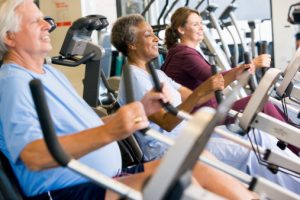
Over the course of three months participants partook in 10-minute bursts of high-intensity exercises three times a day, five days a week. This routine led to a 0.82 percent decrease in blood sugar, compared to the 0.25 percent decrease in those who did sustained, low-intensity exercises.
Exercise has long been associated with the reduction of cholesterol and weight – especially in type 2 diabetics. For years the focus was on sustained, low-intensity workouts.
Lead author, Avinash Pandey, said, “However, more may be accomplished with short bursts of vigorous exercise, in which patients achieve a higher maximum target heart rate, and may be easier to fit into busy schedules. We also found that these 10-minute intervals may be easier to fit into busy schedules, since people randomized to that regimen were more consistent with exercise and ended up doing more exercise per week.”
Seventy-six newly diagnosed type 2 diabetes patients were recruited for the study. Patients either underwent 30 minutes of exercise five times a week or 10 minutes three times a day for five days a week.
Those in the burst group ended up exercising more and experienced a 2.3 fold improvement in HbA1c levels and a three-fold reduction in body mass index. Cholesterol and cardiac fitness improved as well.
As to why burst exercises are more successful than sustained, researchers theorize that the body uses energy in a different way. Pandey concluded, “We are hoping to continue looking at burst exercise and sustained exercise in larger and more diverse patient populations. With further study, burst exercise may become a viable alternative to the current standard of care of low-intensity, sustained exercise for diabetes rehabilitation.”